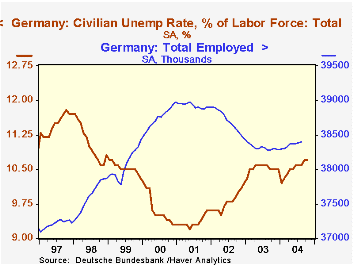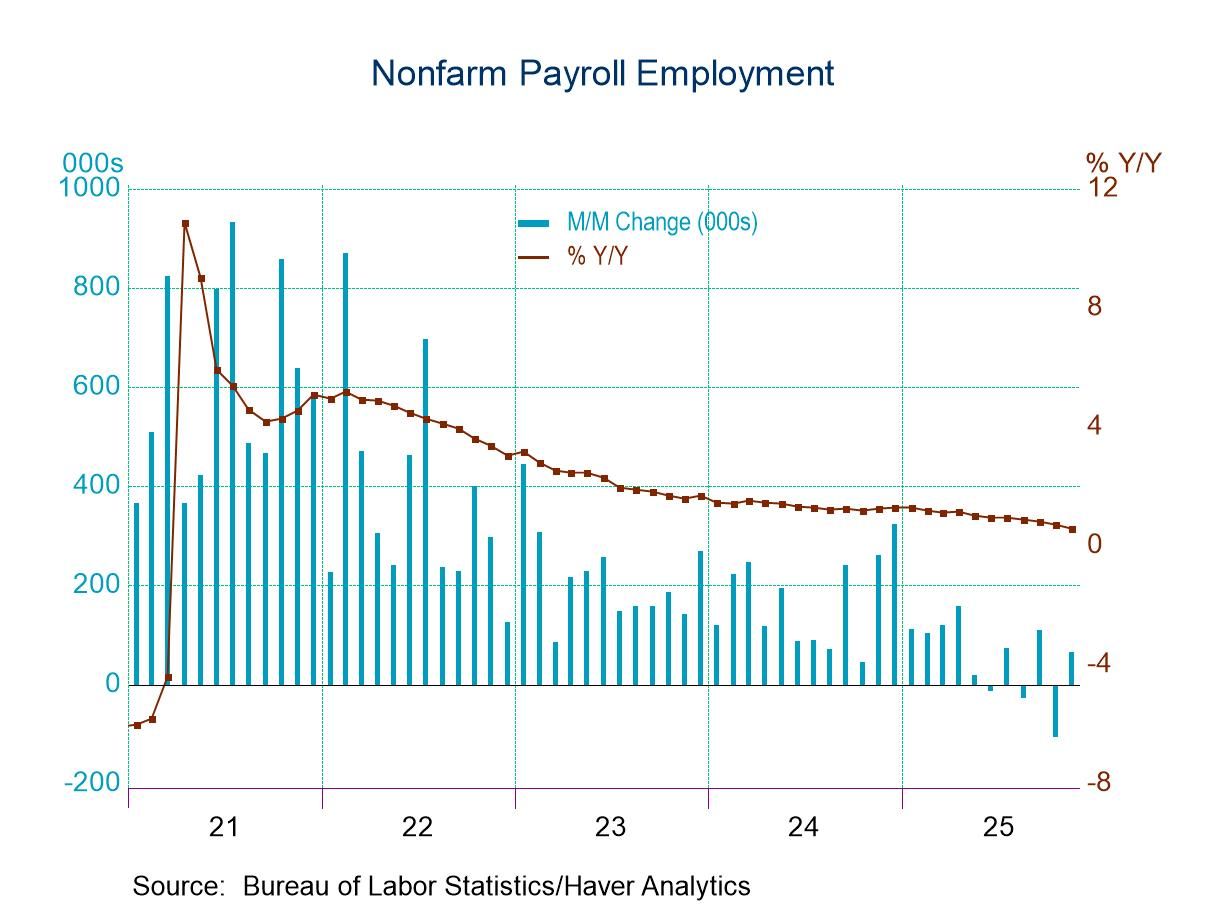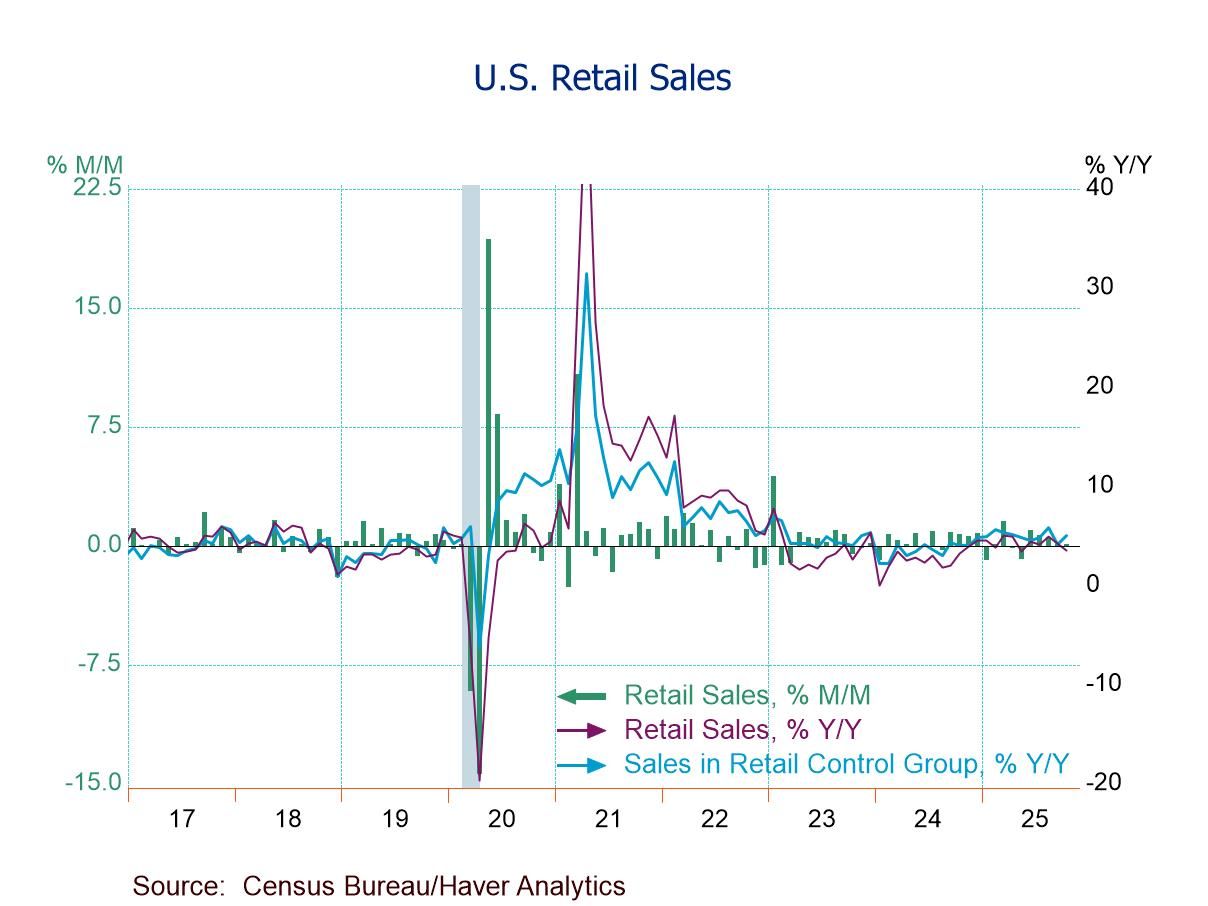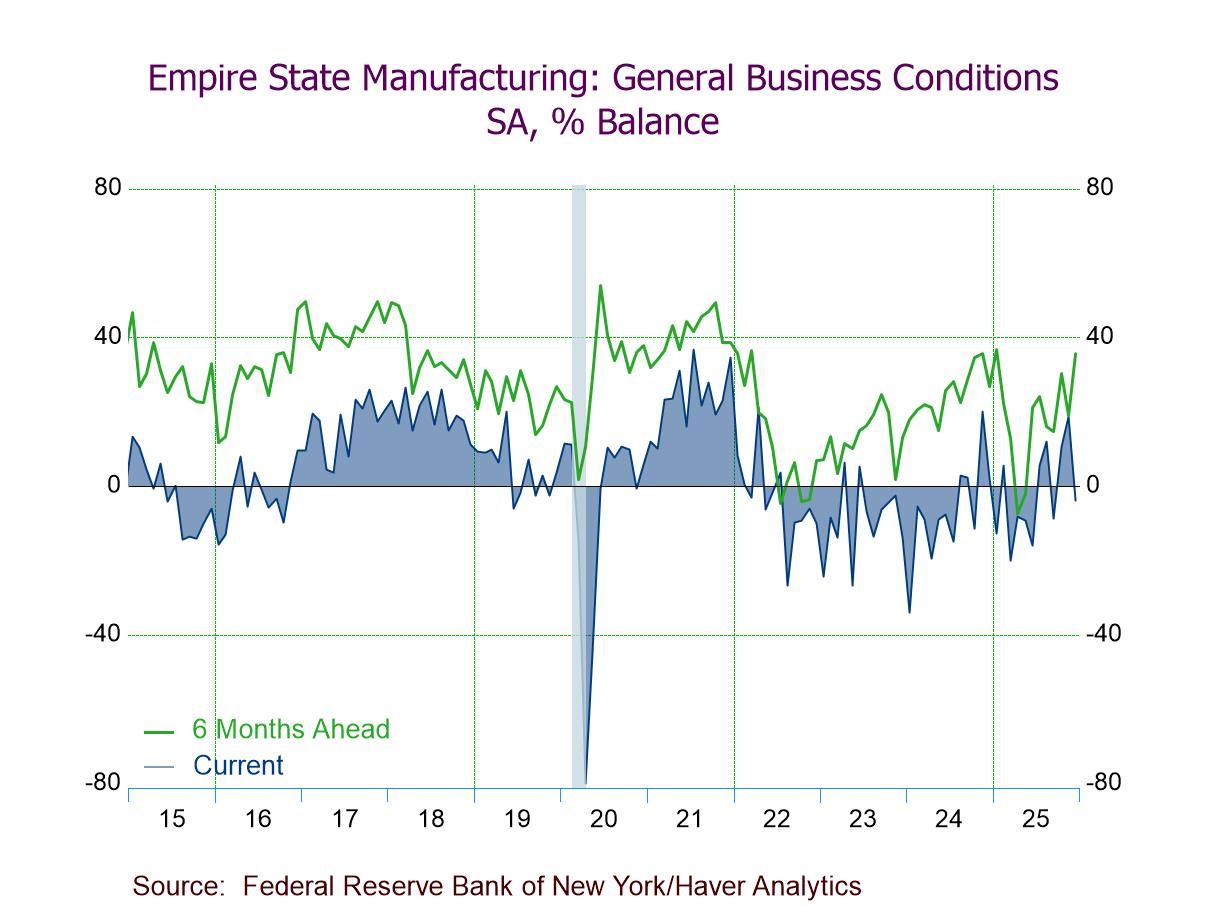 Global| Nov 03 2004
Global| Nov 03 2004Employment Situation Shows Signs of Stabilization in Major European Economies
Summary
Employment in both Germany and Italy is inching forward, according to reports for August issued in the last two days. German employment, according to its labor force survey, has edged ahead each month this year and in August was 0.3% [...]

Employment in both Germany and Italy is inching forward, according to reports for August issued in the last two days. German employment, according to its labor force survey, has edged ahead each month this year and in August was 0.3% above its year-earlier level. While this appears to be a trivial amount, the accompanying graph suggests that it is a distinct relative improvement from the recent 27-month-long stretch of year-on-year shrinkage in the number of people employed in Germany.
The miniscule employment increases in Germany are, however, not enough to help the unemployment side of this economy. The number of people unemployed continued to rise in October and the unemployment rate remained at the 5-1/2 year high of 10.7% that it reached in September.
In Italy, employment is still below year-ago levels, but looks over the last several months to be stabilizing and is already growing in some sectors. The employment measure reported yesterday by Istat is a kind of "establishment" concept, an index of employment at large businesses. The total index was unchanged in August at 87.6 on a base where 2000=100. This level is off from 89.6 a year ago, but up 0.2 percentage point from a low in April. Details indicate a distinct, non-trivial improvement in the manufacturing sector, up 1.8 percentage points since its low in April. Services are up from a February low, by 0.7 point. Utilities and construction jobs continue to decline, holding back the advance in total private sector employment at large firms. Our discussion here highlights the data "excluding c.i.g.", the government-supported positions at these firms which absorb workers who would otherwise be laid off. A measure including those workers is still declining, but at 88.3 in August, has been somewhat steadier in the last few years than the actual number of active workers.
| Oct 2004 | Sept 2004 | Aug 2004 | Jul 2004 |
Year Ago | 2003 | 2002 | 2001 | |
|---|---|---|---|---|---|---|---|---|
| Germany: Employment (millions) |
38.394 | 38.389 | 38.286 | 38.316 | 38.699 | 38.750 | ||
| Unemployment Rate (%) | 10.7 | 10.7 | 10.6 | 10.6 | 10.5 | 10.5 | 9.8 | 9.4 |
| Unemployed Persons (millions) | 4.457 | 4.445 | 4.417 | 4.391 | 4.377 | 4.38 | 4.071 | 3.858 |
| Italy: 2000=100 |
||||||||
| Total Employment (SA) | 87.6 | 87.6 | 89.6 | 90.5 | 93.5 | 97.6 | ||
| Manufacturing (NSA) | 89.6 | 89.2 | 91.3 | 91.3 | 94.3 | 98.0 | ||
| Services (SA) | 99.7 | 99.6 | 98.7 | 98.7 | 98.5 | 99.4 |
Carol Stone, CBE
AuthorMore in Author Profile »Carol Stone, CBE came to Haver Analytics in 2003 following more than 35 years as a financial market economist at major Wall Street financial institutions, most especially Merrill Lynch and Nomura Securities. She had broad experience in analysis and forecasting of flow-of-funds accounts, the federal budget and Federal Reserve operations. At Nomura Securities, among other duties, she developed various indicator forecasting tools and edited a daily global publication produced in London and New York for readers in Tokyo. At Haver Analytics, Carol was a member of the Research Department, aiding database managers with research and documentation efforts, as well as posting commentary on select economic reports. In addition, she conducted Ways-of-the-World, a blog on economic issues for an Episcopal-Church-affiliated website, The Geranium Farm. During her career, Carol served as an officer of the Money Marketeers and the Downtown Economists Club. She had a PhD from NYU's Stern School of Business. She lived in Brooklyn, New York, and had a weekend home on Long Island.





